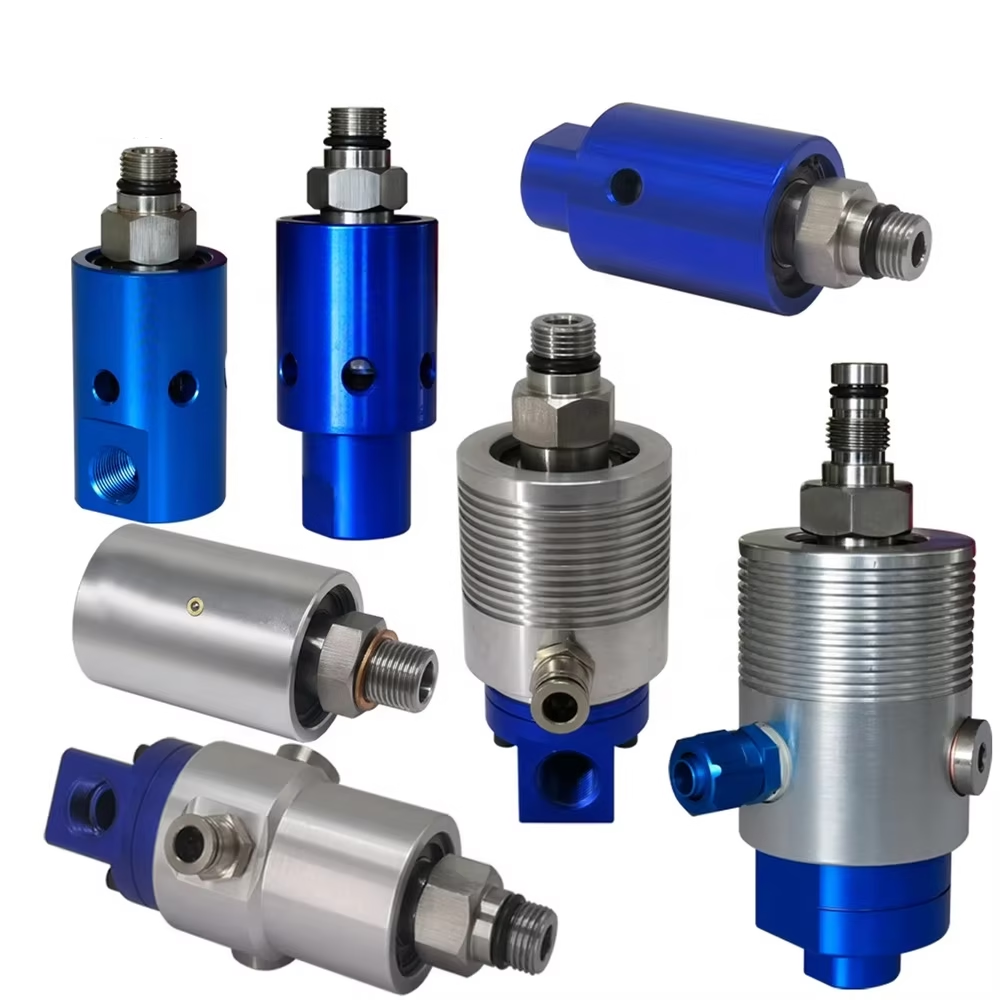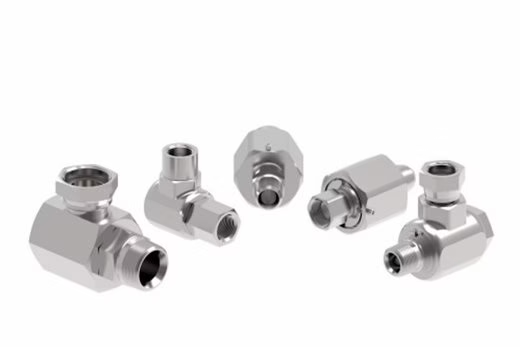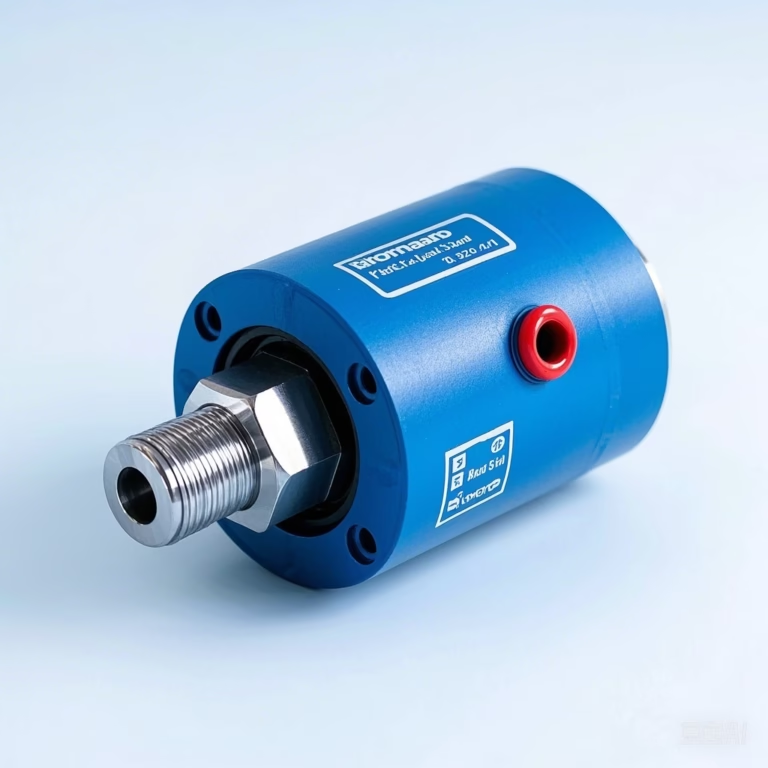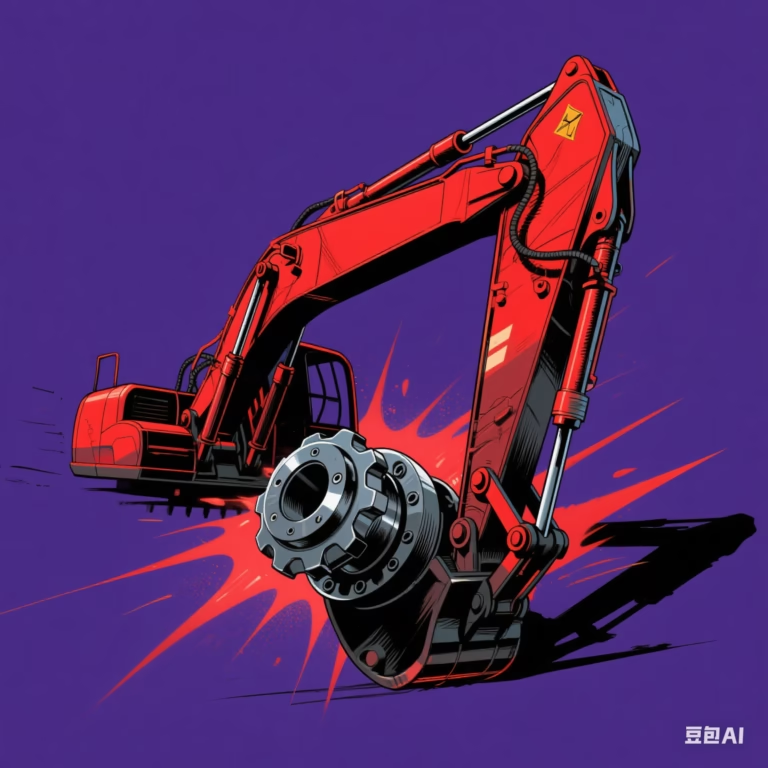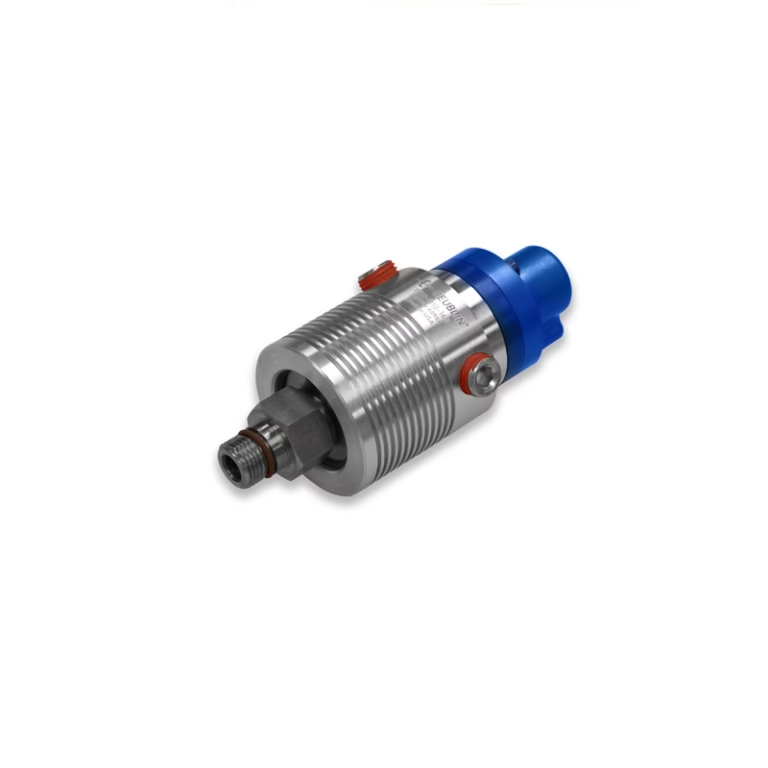Rotary Joints for Air: The Complete Buyer’s Guide
In the world of industrial machinery and equipment, the efficient transfer of air often plays a crucial role. Rotary joints for air come into play right here. Rotary unions, also known as swivels or rotary joints. They are mechanical devices that enable us to transfer air (and in some cases, other fluids or media as well) between a stationary and a rotating part of a machine. In this blog post, we will explore in detail various aspects of rotary unions for air, including their working principles, applications, different types available in the market, and the way to select the appropriate one for your specific needs.
Working Principles of Rotary Unions for Air
An air rotary union consists of a stationary housing and a rotating shaft (nipple). Inside this assembly, precision bearings support the shaft for smooth rotation, and sophisticated seals keep the compressed air from leaking at the interface. In essence, compressed air enters through a port in the housing, flows through internal passages, and exits via the rotating shaft to the machine side, all while the two halves turn freely. The rotary seal is the heart of the union: it “must be tight enough to prevent leakage of pressurized fluid, yet introduce as little torque drag as possible”. Most high-performance air unions use balanced mechanical face seals made from durable materials (carbon-graphite mating with tungsten-carbide or tool steel) to achieve a long, leak-free life.
We design Rotary Joints for Air to provide a leak-free connection for transferring air between a stationary supply source and a rotating component. The basic working principle involves a set of seals and bearings. The seals prevent air leakage, ensuring that we direct the air precisely to where it is needed in the rotating part of the machinery. We use different types of seals, such as mechanical seals, o-rings, and lip seals, each having its advantages depending on the operating conditions.
Bearings, on the other hand, support the rotating part of the union, allowing it to turn smoothly. They help to reduce friction and wear, which is essential for the long-term performance and reliability of the rotary union. In some advanced designs, we use self-aligning bearings to accommodate any misalignment between the stationary and rotating parts, further enhancing the union’s efficiency.
Different Types of Rotary Joints for Air
Single-Channel Air Unions
Single-channel air unions are the simplest form of rotary unions for air. We design them to transfer air through a single passage. People often use these unions in applications where a basic air supply is required for a rotating part. For example, in a small-scale air-operated fan, a single-channel air union can supply air to the rotating fan blades. Some single-channel air unions are self-supported, meaning we can install them without the need for additional support structures. They also come in different sizes, from small-diameter unions for low-volume air applications to larger ones for more substantial air requirements.
Multi-Channel Air Unions
As the name implies, we design multi-channel air unions to transfer air through multiple passages. This type of union is useful in applications where the rotating part of the machinery requires different air pressures or air-controlled functions. For instance, in a complex industrial machine that has multiple air-operated components on a rotating shaft, a multi-channel air union can supply air to each of these components independently. We design some multi-channel air unions with independent sealing for each channel to prevent cross-contamination between the different air supplies. This is crucial in applications where the air in each channel has a specific function or composition.
Low-Speed Air Unions
We optimize low-speed air unions for applications where the rotating part operates at relatively slow speeds. And we design these unions with seals and bearings that are suitable for lower rotational speeds. They often use compounded o-rings or specially designed seals to ensure a long-lasting and leak-free connection. People commonly use low-speed air unions in applications such as certain conveyor systems where the rotation speed is not very high, but a reliable air transfer is still necessary. They are also cost-effective solutions for applications that do not require high-speed performance.
High-Speed Air Unions
In contrast to low-speed air unions, we engineer high-speed air unions to handle high rotational speeds. These unions need seals and bearings that can withstand the increased centrifugal forces and frictional heat generated at high speeds. We often use high-performance materials, such as tungsten carbide, for seals in high-speed air unions to ensure smooth rotation and excellent seal wear resistance. We typically use them in applications like high-speed spindles in machine tools or high-speed air turbines, where the reliable transfer of air at high speeds is essential for the proper functioning of the equipment.
High-Pressure Air Unions
We design high-pressure air unions to transfer air at elevated pressures. And we build these unions with robust construction and high-quality seals to prevent air leakage under high-pressure conditions. We use them in applications such as air-powered hydraulic intensifiers, where high-pressure air generates even higher hydraulic pressures. In these types of applications, the integrity of the rotary union is critical, as any air leakage could lead to a loss of performance or even safety issues. High-pressure air unions often feature balanced mechanical seals, which help to extend the life of the union and reduce the need for frequent maintenance.
Popular Brands and Their Product Offerings
Deublin Company
Deublin is a well-known manufacturer of Rotary Joints for Air. They offer a wide range of products to suit different applications.
1005 Series:
This self-supported rotary union can serve various air-hydraulic applications. We design it with balanced mechanical seals, which significantly reduce seal wear, making it suitable for long-term use in demanding applications.
1102 Series:
The Deublin 1102 air rotating union is compact yet durable, making it ideal for applications like small air clutches. It uses carbon graphite to tool steel seals and has an oil port for relubrication in pneumatic applications, ensuring smooth operation and long service life.
1115 Series:
With its 3/8″ size, this rotary joint is perfect for small air applications. The compact design features seal materials that enhance the union’s service life, and it also has an oiler for relubrication.
1205 Series:
The 1/2″ Deublin rotary union in the 1205 series is a self-supported, monoflow design. It features lubricated-for-life bearings, which extend its life and reduce downtime and maintenance in air-related rotary union applications.
2200 Series:
Deublin designs unions in this series to handle any pneumatic applications that require continuous high speeds or high pressures. They build these unions with high-quality components to meet the demands of these challenging applications.
250 Series:
The single-passage rotary union in the 250 series is for transferring large volumes of air. The 3/4″ design features balanced mechanical seals to extend the life of the union and minimize unwanted maintenance.
355 Air Series:
We use this series to transfer large volumes of media, such as air, to a stationary source. It is designed to handle high-volume air transfer efficiently.
452 Series:
Deublin’s compact pneumatic design in the 452 series can be configured to fit custom applications, providing flexibility for users with unique requirements.
1300 Series:
The monoflow rotary unions in the 1300 series have more than twice the flow capacity of 1/4″ pneumatic and hydraulic unions, making them suitable for applications that require a high-flow rate of air.
17 Series:
People consider the 17 series the best solution for low-speed air rotary union applications. It offers specially designed seals and compounded o-rings to ensure a longer life. It is an economical yet reliable option.
21 Series:
For low-speed rotary union applications in pneumatic systems, the 21 series uses special sealing with a compounded o-ring to achieve a longer seal life.
AP Series:
The high-pressure and high-speed AP rotary union features balanced mechanical seals made with tungsten carbide, which enables smooth rotation and excellent seal wear resistance.
D Series:
The D series is a high-pressure swivel that can handle angular movement. People often use it in power-steering systems in earth-moving equipment, where reliable air transfer under high-pressure and angular conditions is necessary.
2117 Series:
Deublin’s unique tandem rotary union in the 2117 series combines two unions to prevent cross-contamination, with independent sealing in each. It is suitable for several different media combinations, including air.
1690 Series:
The Deu – -plex air rotary union in the 1690 series is designed with two 1/4″ channels for low-speed applications, providing a reliable solution for applications that require multiple air channels at low speeds.
1790 Series:
The 3/8″ rotary union in the 1790 series is ideal for small air applications. Its compact design features seal materials that enhance the union’s service life and an oiler for relubrication.
1379 Series:
We designed the 1379 rotary union with four independent passages, and it can operate with various types of media, including air. A vent in between passages eliminates cross-contamination of two types of media, making it suitable for applications like clamping and unclamping.
1479 Series:
The 1479 rotary union operates at a higher flow rate with various types of media, such as air. The design features widely spaced ball bearings to absorb large side loads and reduce wear, making it suitable for applications like workpieces or spindle cooling.
1890 Series:
The 1/2″ two-channel unions in the 1890 series for pneumatic applications allow for alternating pressure, providing versatility in air-related applications.
1500 Series:
Deublin’s Deu-plex rotating union in the 1500 series is a precision solution ideal for pneumatic clutch and brake applications. We should use the two-pass design only with the same media to extend the seal life.
1590 Series:
The Deublin Deu-plex air rotary union in the 1590 series, best suited for air clutches, is for continuous operation. It uses carbon graphite to ceramic seals to ensure a long service life.
2620 Series:
To prevent contamination among media, such as air, the two-channel union in the 2620 series features independent passages with balanced mechanical seals. TO-rings allow for maximum operation and an increased lifespan.
7000 Series:
Deublin’s dual-passage rotary union in the 7000 series is custom-designed for pneumatic, around-the-shaft applications, providing a tailored solution for specific installation requirements.
We can produce a full range of rotary joints to replace Dublin, which are of high quality and low price, and can meet your production needs.
Choosing the Right Rotary Joints for Air
Consider the Operating Parameters
The first step in choosing the right rotary union for air is to consider the operating parameters of your application. This includes factors such as air pressure, temperature, and rotational speed. If your application requires high-pressure air transfer, you should select a rotary union that has the appropriate rating for that specific pressure. Similarly, if the air temperature is high, you need to choose a union with seals and materials capable of withstanding the elevated temperature. The rotational speed also influences the choice of rotary union, as high-speed applications demand unions with specialized bearings and seals to handle the centrifugal forces.
Determine the Required Number of Channels
Based on your application, you need to figure out how many air transfer channels you require. If you only need to supply a single air source to a rotating part, a single-channel air union will suffice. However, if your application involves multiple air – cair-controlledfunctions or different air pressures in the rotating part, you should opt for a multi-channel air union. Make sure to take into account any future expansion or changes in your application that might call for additional air channels.
Evaluate the Sealing and Bearing Technologies
The sealing and bearing technologies in a rotary union are crucial for its performance and reliability. Different types of seals, such as mechanical seals, o-rings, and lip seals, have distinct advantages and are suitable for different operating conditions. For example, we often use mechanical seals in high-pressure and high-speed applications, while o-rings are more common in lower-pressure and lower-speed scenarios. Similarly, when choosing bearings, such as ball bearings, roller bearings, or self-aligning bearings, you should base your decision on the load requirements and the potential degree of misalignment in your application.
Look for Compatibility with Your System
It is essential to make sure that the rotary union you choose is compatible with your existing system. This involves considering factors like the connection types (e.g., threaded, flanged), the size and dimensions of the union, and the materials used in its construction. The rotary union should integrate seamlessly with the stationary and rotating parts of your machinery, without causing any installation or compatibility problems.
Consider the Brand Reputation and After-Sales Support
It’s always a good idea to choose a rotary union from a reputable brand. Reputable brands are more likely to produce high-quality products that meet industry standards. Moreover, they often provide better after-sales support, such as technical assistance, spare parts availability, and warranty coverage. Before making a purchase, research the brand’s reputation in the market, read customer reviews, and consider the level of support they offer.
How to Select the Right Rotary Union for Compressed Air
When procuring an air rotary union for textile machinery, consider the following factors:
Media (Compressed Air)
Ensure the union is rated for air service (pneumatic). Though many unions can handle various gases, air may carry moisture or require non-lubricated seals. Pick a union explicitly designed for compressed air rotary union use.
Pressure Rating
The union’s maximum pressure must exceed your system pressure. If your compressor runs at 100 PSI, choose a union rated above that (e.g., 150–300 PSI). This avoids seal overload and leakage.
Rotational Speed (RPM)
Determine the RPM of the rotating component. High-speed applications (e.g.,>1000 RPM) need unions with precision balancing and low-torque seals. The union’s speed rating should match or exceed the machine’s maximum speed. Remember [53] notes that only air unions typically run above 1000 RPM.
Flow/Port Size
Calculate the required airflow (CFM or SCFM) through the union. The port size and number of channels determine flow capacity. For example, larger NPT threads or multiple passages allow more air. Ensure the union’s bore isn’t a bottleneck for your air volume.
Seal Material and Lubrication
The seal material must be compatible with dry air at your pressure and temperature. Dann unions use carbon graphite vs carbide for long life. Some unions include a grease or oil port to lubricate seals, which can greatly extend maintenance intervals.
Channel Configuration
Single-passage (one input/output) is the simplest. For machines needing air and another medium (or two air lines), consider a dual- or multi-channel (multimedia) union. The procurement guide suggests choosing single vs multi based on your system complexity.
Construction Material
Corrosive dyeing environments or outdoor equipment call for stainless steel or specialized alloys. Dass supply union bodies (often anodized aluminum or steel) that suit industrial settings.
Mounting and Alignment
The union must physically fit. Check flange mounting vs NPS thread, and use the proper torque arm if needed. Improper mounting can induce side loads that wear out seals. Always follow the manufacturer’s installation instructions and use a proper torque arm if the union isn’t self-supporting.
Maintenance and Support
Opt for reputable brands that offer spare parts (especially seals) and technical support. Dann provides after-sales service, spare-seal kits, and engineering guidance. Leading suppliers stress the importance of spare parts and service centers to minimize downtime.
By matching the union to your system’s air pressure, speed, and flow requirements, and choosing suitable materials and seal types, you ensure a long-lasting, efficient solution. Consulting resources like UEA’s guide can help: “Rotary unions are designed for different media (water, oil, air, steam),” so specify “air” early on with your vendor.
Applications in Textile and Dyeing Industries
Compressed air rotary joints have many key use cases in textile and dyeing plants. Examples include:
Air-Jet Looms
Air-jet weaving machines use high-pressure jets of air to propel the weft yarn across the loom. A rotary union delivers the compressed air from a fixed pipe into the rotating nozzle drum or shuttle assembly, ensuring continuous, high-volume airflow during operation. Without an air swivel joint, the loom would be limited by hoses that wear or kink.
Jet Dyeing Machines
Modern jet dyeing drums often use compressed air to agitate and propel fabrics through the dye liquor. Compressed air is also used to stir dyeing agents and blow-dry fabrics inside the machine. Dann air rotary unions are used to feed this air into the rotating dye drum (the air rotary union for dyeing machine), enabling consistent dye penetration and uniform treatment. The Kaishan USA report notes that “compressed air provides air for dyeing machines, dryers, and other finishing equipment”.
Stenter and Finishing Machines
Stenter frames and drying machines use powerful air curtains and blowers to dry and stretch fabric as it moves. Any rotating section (like a perforated drum) that needs air can use a rotary union. For example, a stenter’s recirculating air blower may drive a rotating heat exchanger requiring an air joint to supply pressurized air.
Pneumatic Actuators and Tools
Many textile machines use pneumatic cylinders and clutches on rotating assemblies (for tension control, indexing, or automation). A rotary union for pneumatic tools or actuators provides air to these cylinders even as they turn with the machine. Air clutch and brake systems (common in large textile machines) also use air swivel joints to supply the pressurized air to the spinning drum.
Cleaning and Conveying
In some finishing lines, rotating air knives or blow-off drums clean or cool fabric with jets of air. These systems rely on air rotary joints to feed continuous air as the drum spins. Similarly, pneumatic conveying systems that lift or shake textiles off a rotating tumbler can use an air swivel.
In short, whenever a textile or dyeing machine needs continuous airflow to a rotating part, an air rotary union is the answer. As Kaishan observes, “air jet looms and many other pieces of equipment employ compressed air in the textile industry”. By using Dann rotary unions for air, engineers ensure these processes get a reliable, leak-free air supply – whether it’s firing yarn through a loom, aerating a dye bath, or running a pneumatic cylinder.
Maintenance and Troubleshooting of Rotary Unions for Air
Regular Maintenance
Regular maintenance is vital to ensure the long-term performance and reliability of rotary unions for air. This includes tasks like checking for air leaks, inspecting the seals and bearings for wear, and lubricating the moving parts. You can detect air leaks by using a soap-bubble solution or an electronic leak detector. If you find any leaks, you should replace the seals immediately. You should inspect the seals and bearings regularly for signs of wear, such as excessive play or damage to the seal faces. Follow the manufacturer’s recommendations and use the appropriate lubricant to lubricate the bearings and other moving parts.
Troubleshooting Common Issues
Air Leakage:
As mentioned before, air leakage is a common problem. If air leakage occurs, start by checking the seals. Worn-out or damaged seals are the most common cause of air leaks. If the seals are in good condition, check the connection points to make sure they are tightened properly. In some cases, a crack or damage in the body of the rotary union can also cause air leakage, and in such a situation, you may need to replace the union.
Excessive Vibration or Noise:
Excessive vibration or noise during the operation of the rotary union may indicate a problem with the bearings. Check the bearings for signs of wear, like pitting or roughness. If the bearings are worn, you should replace them. Uneven airflow or pressure fluctuations can also lead to vibration and noise. In such cases, check the air supply system to ensure that the air pressure is stable and the airflow is smooth. Reduced Performance:
If the equipment using the rotary union for air shows reduced performance, there could be several reasons. A clogged air passage in the rotary union may restrict the airflow, resulting in reduced performance. Check for any debris or contaminants in the air passages and clean them if needed. Additionally, worn-out seals or bearings can also cause a decrease in performance, as they may allow air leakage or increase friction.
Conclusion
Rotary Joints for Air are essential components in many industrial applications. Understanding their working principles, applications, different types, and how to choose and maintain them. It is crucial for ensuring the efficient and reliable operation of machinery and equipment. By carefully considering the factors discussed in this blog post. You can select the right rotary union for your specific air-transfer needs and keep it in good working condition for a long time.
Rotary joints for air are indispensable in modern textile and dyeing facilities. They allow the free rotation of machines like looms, dye drums, and finishing cylinders while providing a constant flow of compressed air. By understanding the construction (housing, shaft, bearings, seals) and carefully selecting a union that matches the air pressure, speed, and flow requirements, engineers can avoid costly leaks and downtime. Dann’s high-performance air swivel joints, with their durable seals and robust construction, offer an ideal solution. Backed by expert guidance and global support, Dann rotary joints keep pneumatic systems running efficiently – making them a trusted choice for the textile industry.

